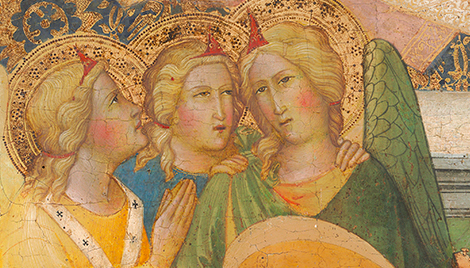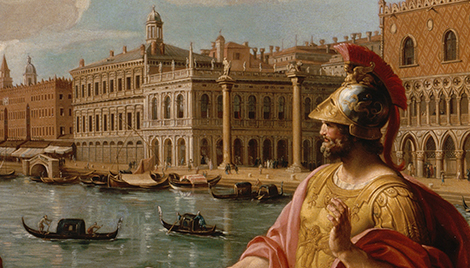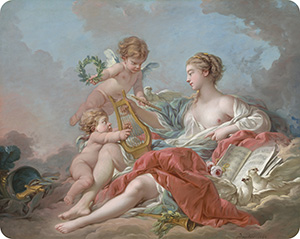Allegory of Music
Allegory of Music
- Artist
- François Boucher
- Artist Dates
- 1703-1770
- Artist Nationality
- French
- Title
- Allegory of Music
- Date
- 1764
- Medium
- oil on canvas
- Dimensions
- 103.5 x 130 cm (40 3/4 x 51 3/16 in)
- K Number
- K1337
- Repository
- National Gallery of Art
- Accession Number
- 1946.7.2
- Notes
Provenance
Possibly Maximilian III Joseph, Elector of Bavaria [1745-1777]. Traditionally said to have been brought into France by the early 19th century by Général de Saint-Maurice. M. Maillet du Boullay, Paris; (his sale, Hôtel Drouot, Paris, 22 January 1870, no. 1); M. Féral. Gustave Rothan, Paris, by 1874; [1] (his sale, Galerie Georges Petit, Paris, 29-31 May 1890, no. 122). Adèle, 4th duchesse de Dino [née Adèle Livingston Sampson, 1842-1912; married first to Frederick W. Stevens], Paris, by 1907; probably by inheritance to her daughter, Countess Mabel Stevens Orlowski [married 1891 to Count Mieczyslaw Orlowski (1865-1929)]; [2] (Wildenstein & Co., Inc., Paris, New York, and London); sold 1942 to the Samuel H. Kress Foundation, New York; gift 1946 to NGA. [1] The early provenance of this painting and NGA 1946.7.1 is based on tradition rather than documentary evidence, and derives from Paul Mantz, "La Galerie de M. Rothan," _Gazette des Beaux-Arts_ (1873): 442, who believed the pair had been painted for the Elector of Bavaria, Maximilian III Joseph. They were then supposedly returned to France in the early nineteenth century by General de Saint-Maurice, who, according to André Michel, _François Boucher_, Paris, n.d. [1906]: 51, kept them for some sixty years before selling them to Maillet du Boullay. As Alastair Laing has pointed out, however, Saint-Maurice never served in Bavaria and died in 1796 (letter of 20 April 1997 to Richard Rand). Nor do any references to the paintings appear in the state archives of Bavaria; see Colin Eisler, _Paintings from the Samuel H. Kress Collection: European Schools Excluding Italian_, Oxford, 1977: 318, who offered the possibility that they were commissioned by Joseph von Dufresne, a courtier of the Elector who had a large collection of French pictures (see also correspondence in NGA curatorial files). Mantz writes that Rothan acquired the pair of paintings in 1870, probably at Maillet du Boullay's sale; Rothan certainly owned them by 1874, when he lent them to an exhibition in Paris. [2] The Wildenstein prospectus for the pair of paintings listed the last three owners as Mme. Livingston-Sampson, Duchesse de Dino, and Comte Orllowski [_sic_]. Research for the Gallery's systematic catalogue of 15th-18th century French paintings determined that the first two names were the same person, and that the Count was her son-in-law. See NGA curatorial files for the prospectus and documentation of the family history. [1] The early provenance of this painting and NGA 1946.7.2 is based on tradition rather than documentary evidence, and derives from Paul Mantz, "La Galerie de M. Rothan," _Gazette des Beaux-Arts_ (1873): 442, who believed the pair had been painted for the Elector of Bavaria, Maximilian III Joseph. They were then supposedly returned to France in the early nineteenth century by General de Saint-Maurice, who, according to André Michel, _François Boucher_, Paris, n.d. [1906]: 51, kept them for some sixty years before selling them to Maillet du Boullay. As Alastair Laing has pointed out, however, Saint-Maurice never served in Bavaria and died in 1796 (letter of 20 April 1997 to Richard Rand). Nor do any references to the paintings appear in the state archives of Bavaria; see Eisler 1977, 318, who offered the possibility that they were commissioned by Joseph von Dufresne, a courtier of the Elector who had a large collection of French pictures (see also correspondence in NGA curatorial files). Mantz writes that Rothan acquired the pair of paintings in 1870, probably at Maillet du Boullay's sale; Rothan certainly owned them by 1874, when he lent them to an exhibition in Paris. [2] The Wildenstein prospectus for the pair of paintings listed the last three owners as Mme. Livingston-Sampson, Duchesse de Dino, and Comte Orllowski [_sic_]. Research for the Gallery's systematic catalogue of 15th-18th century French paintings determined that the first two names were the same person, and that the Count was her son-in-law. See NGA curatorial files for documentation of the family history.






